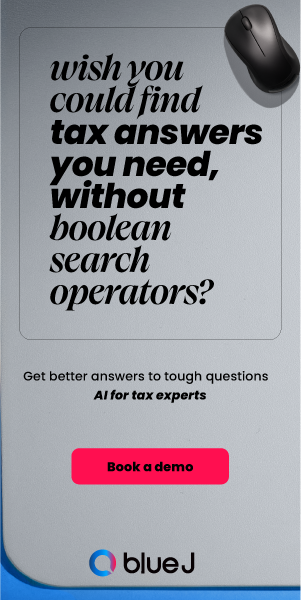Tax Court Of Canada rejects CRA's attempt to apply gross-negligence penalties in statute-barred years

Canadian accountant and tax lawyer David J Rotfleisch looks at the case of an Alberta restauranteur and an inheritance in Fuhr v. The King
Introduction: Statute-Barred Taxation Years
 |
David J Rotfleisch, CPA, JD is the founding tax lawyer of Taxpage.com and Rotfleisch & Samulovitch P.C., a Toronto-based boutique tax law corporate law firm. |
Canada's Income Tax Act generally bars the Canada Revenue Agency from reassessing a taxpayer's taxable income or tax payable after the expiry of the normal reassessment period. For most taxpayers, the period expires three years from the date that the CRA issued the initial tax assessment for the taxation year.
When the normal reassessment period expires, the taxation year becomes statute-barred. This means that the CRA can no longer tax audit that year's income-tax return or increase that year's tax bill. It also means that the CRA can no longer apply civil tax penalties, such as gross-negligence penalties, relating to a statute-barred taxation year. (Canada's Excise Tax Act contains a similar tax rule, which generally prohibits the CRA from reassessing a GST/HST reporting period "more than four years after" the day that the GST/HST return was filed for that period.)
The statute-barred rule aims to promote some measure of certainty and finality in Canada's tax system. According to Tingley v R, [1999], the rule serves to "provide a window during which the [Canada Revenue Agency] may review and make [a tax reassessment] yet provide the taxpayer who has not made misrepresentations some certainty in their tax affairs."
As this quote suggests, however, the statute-barred rule comes with qualifications. In particular, the CRA may still reassess an otherwise statute-barred taxation year if, when filing the tax return for that year, the taxpayer either (i) committed fraud or (ii) made a misrepresentation attributable to neglect, carelessness, or wilful default.
Still, the CRA bears the burden of proving that the taxpayer committed fraud or made such a misrepresentation. Yet its tax auditors will often reassess otherwise statute-barred taxation years without sufficient evidence that the taxpayer committed fraud or made a misrepresentation attributable to neglect, carelessness, or wilful default.
Fuhr v The King provides yet another example of this practice. Faced with the CRA's lack of evidence, the Tax Court of Canada allowed the taxpayers' appeal outright — thereby cancelling tax reassessments that imposed over $2 million in additional taxable income and about $500,000 in gross-negligence penalties.
The CRA's right to audit and reassess otherwise statute-barred taxation years
Subsection 152(4) of Canada's Income Tax Act gives the CRA the right to reassess an otherwise statute-barred taxation year under any of the following three conditions:
- The taxpayer filed a waiver allowing the CRA to reassess a statute-barred taxation year.
- The taxpayer made a misrepresentation attributable to neglect, carelessness, or wilful default in filing the return or in supplying information to the CRA.
- The taxpayer committed fraud in filing the return or in supplying information to the CRA.
To reassess a statute-barred year on the basis of condition 2, the CRA bears the burden of establishing, on a balance of probabilities, both: (1) that the taxpayer made a misrepresentation; and (2) that the misrepresentation was attributable to neglect, carelessness, or wilful default: Vine Estate v Canada, 2015 FCA 125, at para 24; Papier Domco Inc. v. The Queen, 2011 TCC 441, at para 11.
The CRA also bears the burden of proof if it seeks to reassess a statute-barred year on the basis of condition 3. In this case, the CRA's tax auditor must establish, on a balance of probabilities, that the taxpayer committed fraud.
In other words, the CRA may reassess beyond the normal reassessment period only if it establishes that it is entitled to do so, and the "[Canada Revenue Agency's] entitlement to reassess beyond the normal reassessment period must be established by proving the existence of any of the elements set out in subparagraph 152(4)(a)(i). It is up to the [CRA's tax auditors] to do so.": Sarraf v the Queen, [1994] 1 CTC 2519 at 2522 (Bowman TCJ).
This means that the auditor cannot merely assume that a taxpayer made a misrepresentation attributable to neglect, carelessness, or wilful default. This tax jurisprudence therefore reverses the onus that would otherwise apply when other tax issues are under dispute. For the most part, in Canadian tax disputes, the CRA may make factual assumptions — that is, assume the facts favouring the CRA's position without proving that those facts are true — and the taxpayer bears the initial burden of disproving the CRA's factual assumptions. But the Canada Revenue Agency cannot reassess a statute-barred year on this basis. The burden is flipped when it comes to subparagraph 152(4)(a)(i) of Canada's Income Tax Act. The CRA's tax auditor must prove, on a balance of probabilities, that the taxpayer did indeed make a misrepresentation attributable to neglect, carelessness, or wilful default. The CRA cannot merely assume that the taxpayer made such a misrepresentation.
This fundamental rule is often ignored by the CRA tax auditors. In Fuhr, the CRA did precisely that, as is too often the case.
Fuhr v The King, 2024 TCC 43
Mr. Fuhr [editor's note: an Albertan who owned and operated several restaurants] and his corporation underwent a tax audit by the CRA. The auditor decided to employ various indirect income-verification methods, including a net-worth analysis and bank-deposit analysis. These indirect methods of income verification are inherently inaccurate. But the CRA's advantage lies in the fact that, under Canada's income-tax system, the taxpayer has the initial onus of rebutting the CRA's assumptions. In other words, the CRA benefits from the numerous assumptions underlying these indirect income-verification methods.
By means of the net-worth and bank-deposit analyses, the auditor estimated that Mr. Fuhr had failed to report a total of about $1.3 million in income for the 2011, 2012, and 2013 taxation years. The net-worth and bank-deposit analyses also led the CRA's tax auditor to conclude that Mr. Fuhr's corporation had failed to report about $700,000 in income for the 2012 and 2013 taxation years.
Although all these taxation years were statute-barred, the auditor decided that the results of the CRA's indirect income-verification methods demonstrated that the taxpayers had made misrepresentations attributable to neglect, carelessness, or wilful default. This, concluded the auditor, justified reassessing the otherwise statute-barred taxation years under subparagraph 152(4)(a)(i) of the Income Tax Act. As a result, the auditor reassessed Mr. Fuhr and his corporation, thereby increasing Mr. Fuhr's taxable income by over $1.3 million and increasing the corporation's taxable income by $700,000.
The CRA tax auditor also levied a total of approximately $500,000 in gross-negligence penalties under subsection 163(2) of Canada's Income Tax Act.
Mr. Fuhr's tax-litigation lawyer appealed to the Tax Court and argued that the CRA had failed to demonstrate that either Mr. Fuhr or his corporation made misrepresentations attributable to neglect, carelessness, or wilful default.
The Court ultimately agreed. First, the CRA's lawyer called no witnesses and attempted to rely entirely on cross-examination of the taxpayers' witnesses. And although the Tax Court found that Mr. Fuhr's testimony lacked credibility, the court noted numerous errors in the CRA's indirect income-verification methods.
For example, Mr. Fuhr received a $225,000 bank draft as part of his inheritance from his mother's estate. Yet the auditor inexplicably treated only $25,000 of the $225,000 as a non-taxable inheritance and classified the remaining $200,000 as taxable income. Faced with the seemingly obvious error and the absence of CRA witnesses, the Court concluded that the entire $225,000 should have been treated as a non-taxable gift:
I hasten to add that I did not hear any evidence on the appropriateness of the auditor's decision to treat two portions of the bank draft differently.
In light of the bank draft and the parties' submissions, I find that Tim Fuhr received $225,000 from his mother in April 2011 and that the whole amount, as opposed to only $25,000, must be treated as a non-taxable source of income.
Mr. Fuhr's lawyer presented the court with numerous similar calculation errors by the auditor. After hearing this evidence, the Tax Court concluded that the CRA's net-worth analysis was "seriously flawed," and it therefore couldn't demonstrate that either Mr. Fuhr or his corporation made misrepresentations attributable to neglect, carelessness, or wilful default when filing their income-tax returns.
Hence, Mr. Fuhr not only disproved the CRA's allegations of unreported income, but also showed that the CRA had reassessed statute-barred years without warrant. The Tax Court consequently allowed the taxpayers' appeals — cancelling all the tax reassessments, thereby allowing Mr. Fuhr and his corporation to sidestep over $2 million in fictitious additional income and about $500,000 in unjustified gross-negligence penalties.
The statute-barred tax rule illustrates why Canadian taxpayers should file income-tax returns by the filing due dates every year. For most taxpayers, the normal reassessment period expires three years from the date that the CRA issued the taxpayer's initial tax assessment for the taxation year. If the CRA never issues a tax assessment for a particular tax year, that year will never be statute-barred.
By filing an income-tax return, you will cause the CRA to issue a notice of assessment. The assessment, in turn, will start the clock on the normal reassessment period. If, on the other hand, you don't file an income-tax return, the CRA generally won't issue a tax assessment for that year. Hence, that year will remain vulnerable to a CRA tax audit at any time.
David J Rotfleisch, CPA, JD is the founding tax lawyer of Taxpage.com and Rotfleisch & Samulovitch P.C., a Toronto-based boutique tax law corporate law firm and is a Certified Specialist in Taxation Law who has completed the CICA in-depth tax planning course. He appears regularly in print, radio and TV and blogs extensively.
With over 30 years of experience as both a lawyer and chartered professional accountant, he has helped start-up businesses, cryptocurrency traders, resident and non-resident business owners and corporations with their tax planning, with will and estate planning, voluntary disclosures and tax dispute resolution including tax audit representation and tax litigation.
Visit www.Taxpage.com and email David at david@taxpage.com. Read the original article on Tax Law Canada. Photo David Rotfleisch courtesy Rotfleisch & Samulovitch P.C. Title image: iStock.









(0) Comments